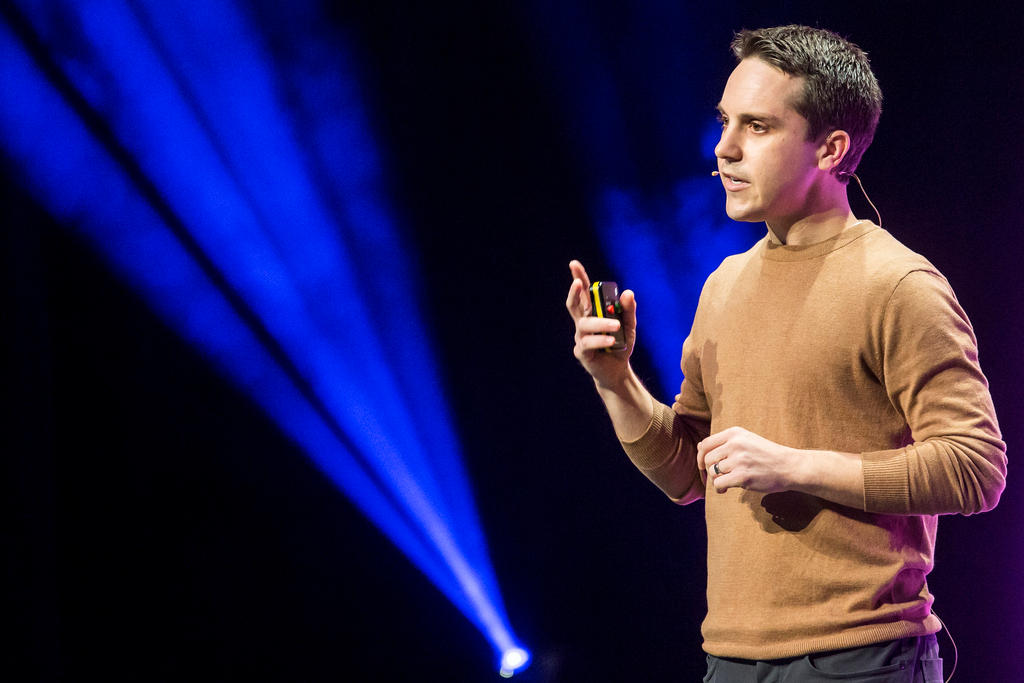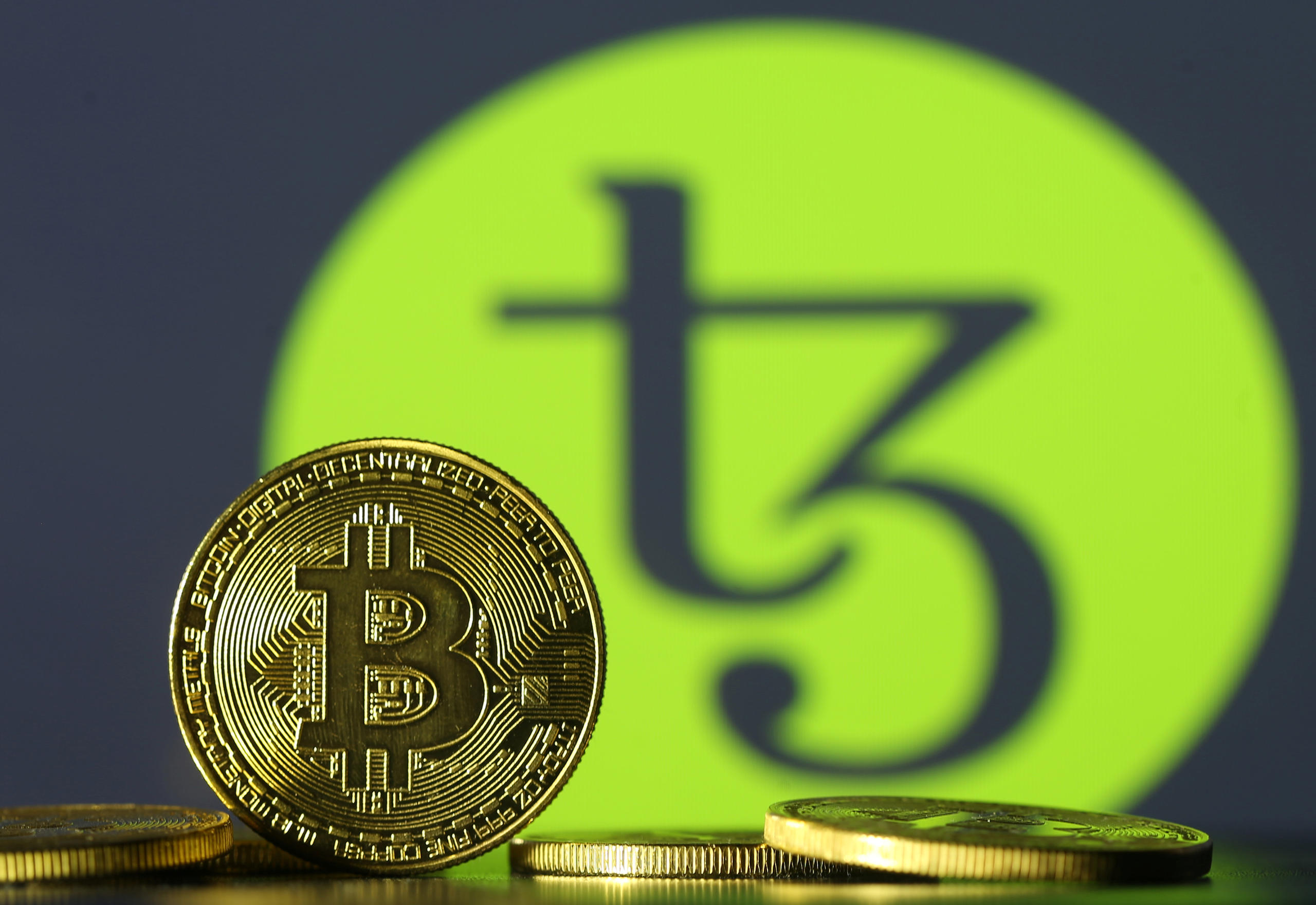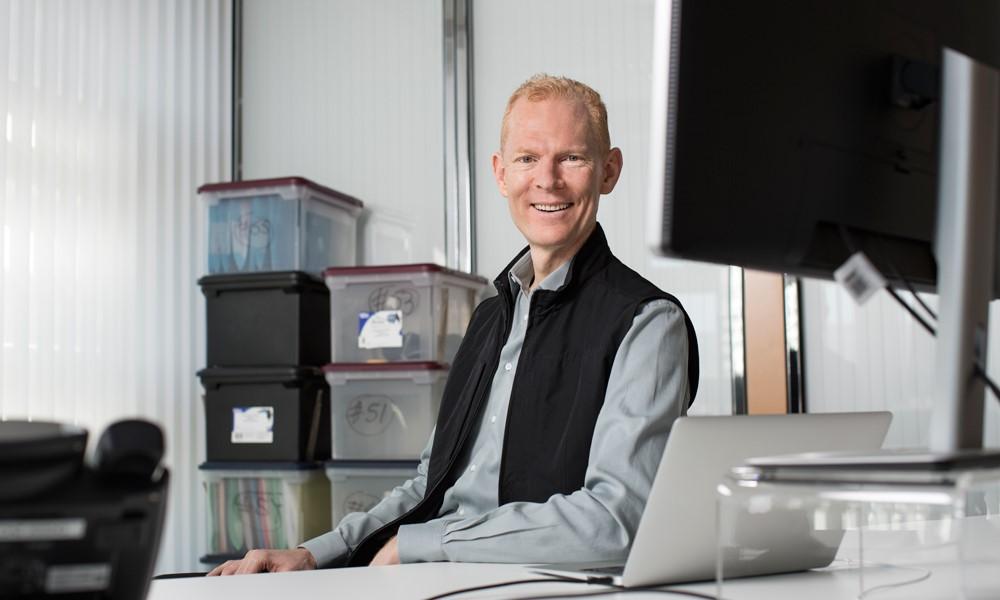How the Tezos blockchain could empower the poor

The Tezos blockchain is taking its first teetering steps following a difficult birth, marked by fractious rows and lawsuits. The Tezos foundation president has lofty goals for the platform, not least helping lift people out of poverty. But it first must deal with regulatory and investor demands.
The Swiss-based foundationExternal link wants Tezos to be the premier blockchain platform for an anticipated decentralised social and economic revolution. To do that, the foundation – tasked with spending $500 million on the blockchain’s development – has to convince both the public and regulators of its merits.
Foundation President Ryan Jesperson told swissinfo.ch that neither he nor the foundation have the power or the will to take over the controls. It’s up to the whole community of Tezos users to jointly shape its destiny, he says.
However Jesperson, drawing on his Mormon background including two years spent on projects that “helped people lift themselves out of poverty”, has a personal vision for Tezos.
“Tezos could be leveraged to improve the plight of the poor in developing countries,” he says. “It can empower people in areas where there is government obfuscation, no transparency or infrastructure.”

More
Tezos blockchain platform finally goes live
The claim that blockchain can solve global poverty is often met with scorn. But Jesperson is convinced that payment systems or micro-insurance projects that operate out of the reach of corrupt officials or profit-driven banks are the way forward.
That could be made possible as blockchains function as self-sufficient communities outside the direct influence of centralised authorities or companies. Tezos is designed to facilitate any number of tasks: from financial transactions, starting a company to gaming or social projects.
Jesperson acknowledges that the technology needs to be refined so anyone can use it – and at a scale that could cope with large volumes of transactions. At present, only around 450 of the thousands of people who poured $232 million into the project in 2017 are actively producing – or ‘baking’ – ‘Tezzie’ tokens. A bit like a slot machine, these digital tokens are needed to operate the blockchain.
In it for the money
The suspicion is that many people saw Tezos simply as an investment, a means to make money by selling their tokens at a higher price once the platform took off. And therein lies a potential problem for Tezos.
A handful of investors have lodged lawsuits in the United States claiming that a bitter dispute between Tezos founders, Arthur and Kathleen Breitman, and former foundation president Johann Gevers cost them money. A lawyer handling one of these lawsuits told swissinfo.ch that the process could drag on for years unless a settlement was reached out of court.
Regulators, especially the US Securities and Exchange Commission (SEC), pose more of a threat to Tezos if they rule that the tokens sold in 2017 represent undeclared securities.
The foundation has made efforts to mitigate the risk since Gevers was persuaded to stand down in February of last year. The entire board was replaced and expanded while PricewaterhouseCoopers was brought in as auditors.
Big Brother regulator
A more controversial move was to apply retrospective ‘Know Your Customer’ (KYC) procedures for everyone who bought Tezos tokens in 2017. This complies with anti-money laundering laws but annoyed some people who bought into Tezos on the premise that the decentralised project would sidestep Big Brother regulatory intrusion.
More recently, a general counsel and a chief financial officer have been appointed to ramp up compliance at the foundation and keep control of its bulging coffers.
Another hurdle is convincing a sceptical public that decentralisation is the way forward, not only for finance but for the economy and society in general. Critics condemn blockchain as humbug, supporters call it the true path for the future. In between lies the vast majority of people for whom blockchain remains a sideshow.
Even if blockchain becomes a part of everyday life, there are now dozens to choose from. Ethereum, Cardano and DFINITY are among other blockchains that have set up foundations in Switzerland. NEO and EOS represent a challenge from China.
But Jesperson believes that Tezos technology has an in-built competitive edge over rivals. For one thing, the so-called ‘proof-of-stake’ mechanism for producing tokens uses less energy than other blockchains. It is also possible to delegate token production to other parties.
But the ‘killer app’ is on-chain governance, a system of voting on infrastructure upgrades designed to avoid the sharding of blockchains into rival factions whenever there is disagreement. “When that happens, the technology becomes stagnant,” says Jesperson. “Tezos is self-amending so it avoids this by upgrading automatically.”

In compliance with the JTI standards
More: SWI swissinfo.ch certified by the Journalism Trust Initiative











You can find an overview of ongoing debates with our journalists here . Please join us!
If you want to start a conversation about a topic raised in this article or want to report factual errors, email us at english@swissinfo.ch.